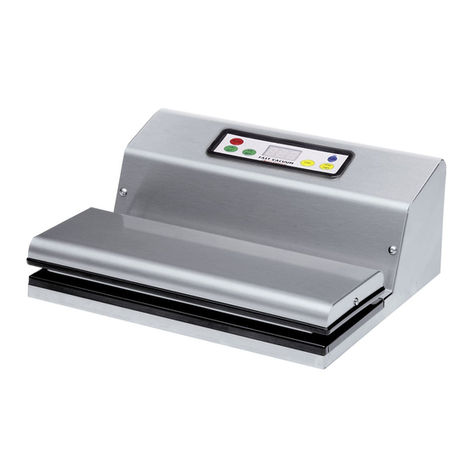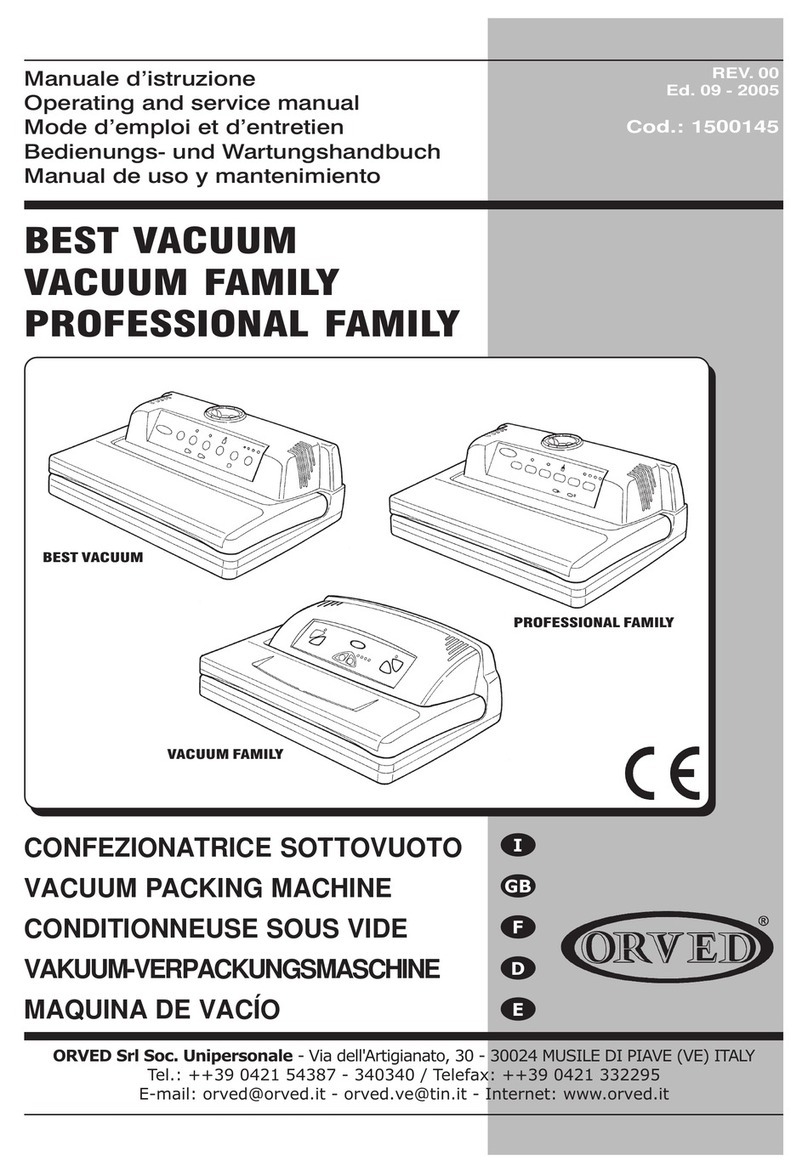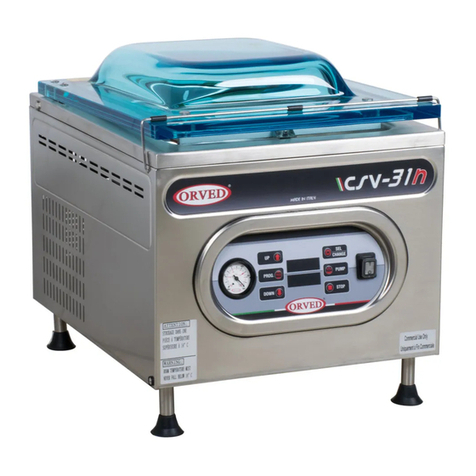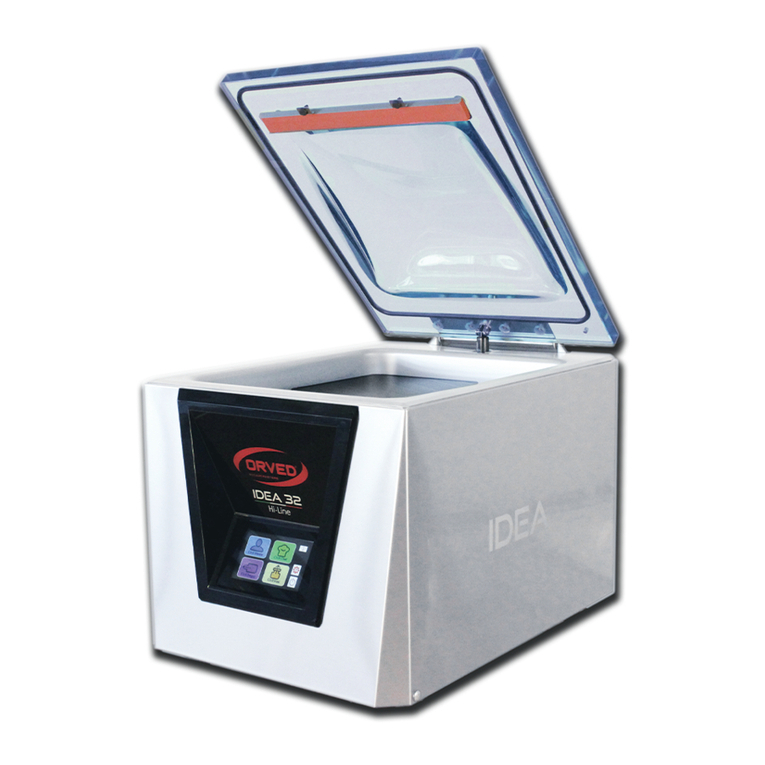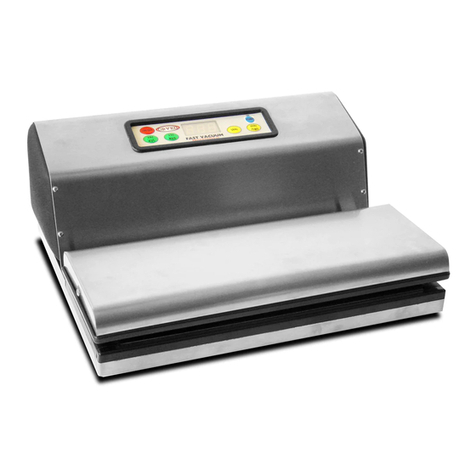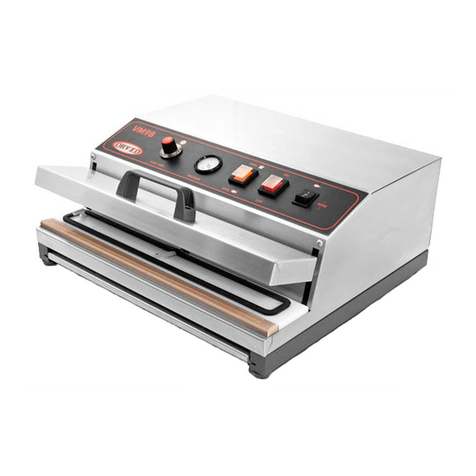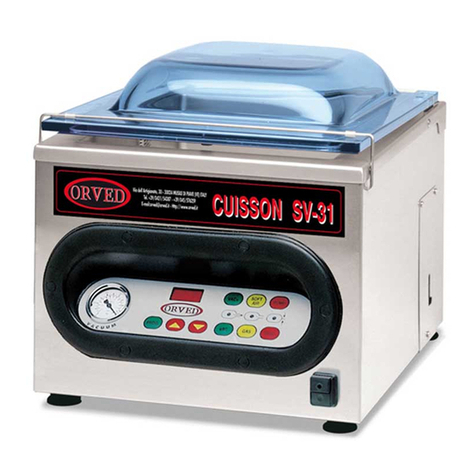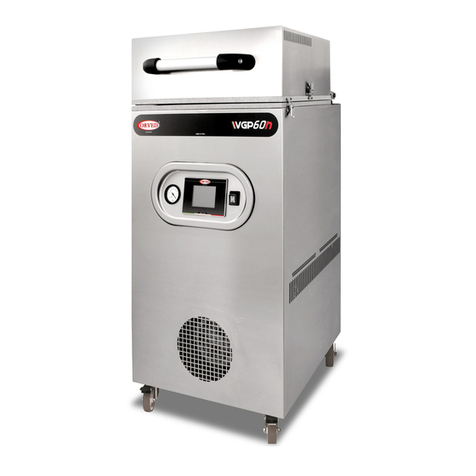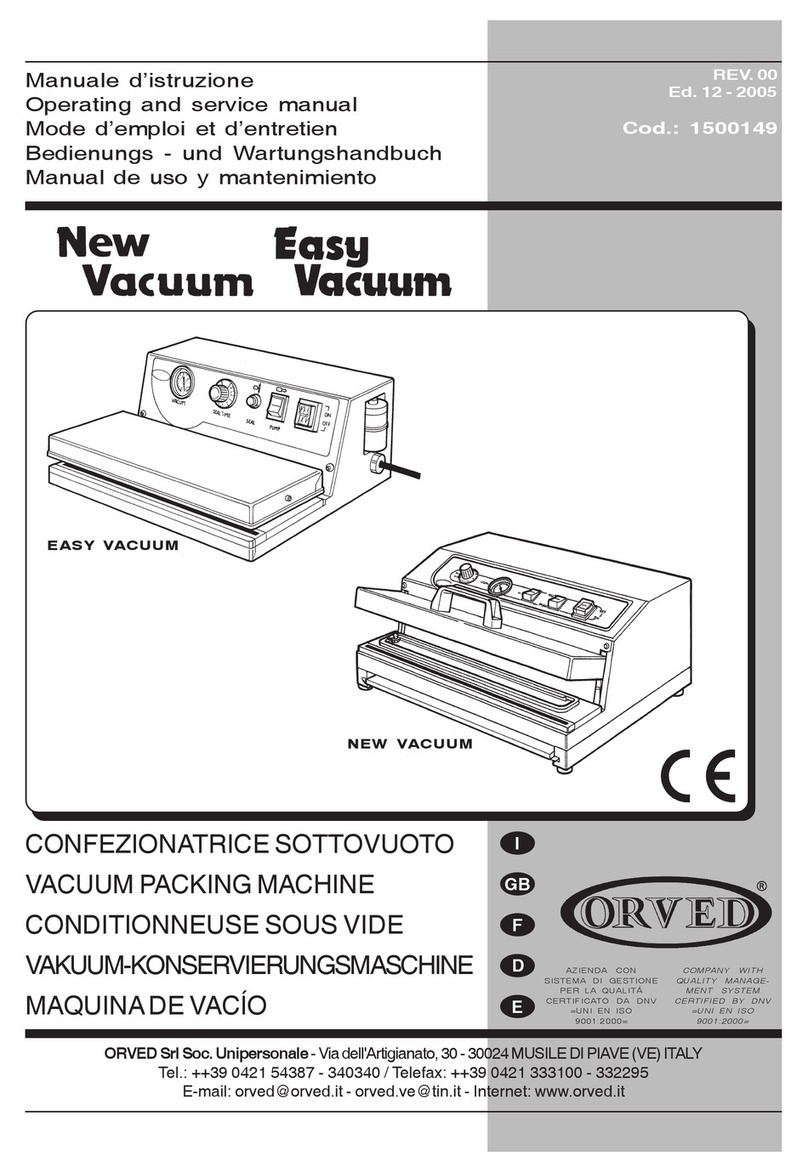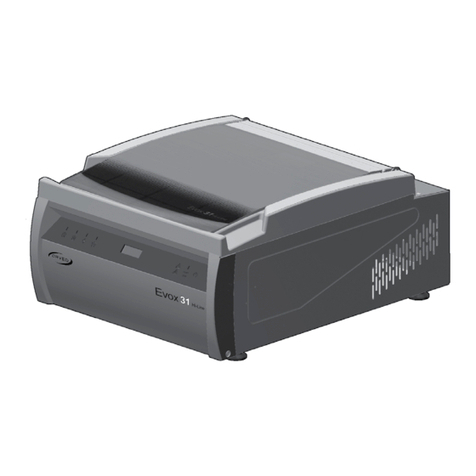
LL
LL
L’INDUS’INDUS
’INDUS’INDUS
’INDUSTRIA DEL SOTRIA DEL SO
TRIA DEL SOTRIA DEL SO
TRIA DEL SOTTTT
TTTT
TTOO
OO
OVUOVUO
VUOVUO
VUOTT
TT
TOO
OO
O
THE VACUUM PACKAGING INDUSTRY
L’INDUSTRIE DU SOUS VIDE
DIE VAKUUMVERPACKUNGSINDUSTRIE
LA INDUSTRIA DEL VACIO
Nel ringraziarLa per la preferenza accordata, la Ditta Costruttrice è lieta di annoverarLa tra
i suoi affezionati Clienti e confida che l’uso di questo macchinario sia per Lei motivo di
piena soddisfazione. Il presente Manuale di Uso serve da riferimento per una guida
corretta ed una rapida identificazione della macchina in tutte le sue parti e versioni. I
disegni, le tabelle e quant’altro contenuto nel presente Manuale di Uso sono di natura
riservata e, per questo, ogni informazione non può essere riprodotta nè completamente
nè parzialmente e non può essere comunicata a terzi, senza l’autorizzazione della Ditta
Costruttrice che ne è la proprietaria esclusiva. In base alla propria politica di continuo
miglioramento della qualità la Ditta Costruttrice si riserva il diritto di apportare tutte le
modifiche che riterrà opportuno in qualsiasi momento e senza preavviso.
In thanking you for the preference shown, the Manufacturer welcomes you among our
customers and trusts that you will be fully satisfied with the machine.
This Operator’s Manual serves as a reference and guide for correct and rapid identification
of the machine in all its parts and versions.
The drawings, tables and anything else contained in this Operator’s Manual are of a
confidential nature and therefore no part of it may be reproduced either completely or
partially or communicated to third parties, without the express permission of the
Manufacturer who is its exclusive owner. In accordance with the Firm’s policy of constant
improvement the Manufacturer reserves the right to make any modifications deemed
opportune, at any time and without prior notice.
En vous remerciant pour la préférence accordée, la Société Constructrice est heureuse
de vous compter parmi ses nouveaux clients et vous certifie que l’utilisation de cette
machine vous rendra pleine satisfaction. Le présent Manuel d’Utilisation sert de référence
pour un guide correct et une rapide identification de la machine dans toutes ses parties
et versions.
Les dessins, les tableaux et les autres contenus dans le présent Manuel d’Utilisation
sont de nature réservée et, pour cela, aucune information ne peut être reproduite ni
complètement ni partiellement et ne peut être com-muniquée à des tiers sans l’autorisation
de la Société Constructrice, qui en est la propriétaire exclusive.
Sur base d’une politique d’amélioration continue de la qualité, la Société se réserve le
droit d’apporter toutes les modifications qu’elle jugera opportunes à tout moment et sans
préavis.
Die Herstellerfirma dankt Ihnen für Ihre Wahl und freut sich, Sie zu ihren treuen Kunden
zählen zu dürfen. Wir sind überzeugt, daß Sie der Gebrauch dieser Maschine voll
zufriedenstellen wird.
Die vorliegende Bedienungsanleitung dient als Bezugspunkt für einen korrekten Gebrauch
und eine rasche Identifizierung der Maschine in allen ihren Teilen und Versionen. Die
Zeichnungen, Tabellen und der sonstige Inhalt der vorliegenden Bedienungsanleitung
sind vertraulicher Natur, und die Informationen dürfen daher ohne Genehmigung der
Herstellerfirma, die deren ausschließlicher Eigentümer ist, weder vollständig noch
teilweise reproduziert oder an Dritte weitergegeben werden.
Aufgrund ihrer Politik der ständigen Verbesserung der Qualität behält die Herstellerfirma
sich das Recht vor, jederzeit und ohne Vorankündigung alle Abänderungen, die sie für
angebracht hält, vorzunehmen.
Agradeciéndole de antemano la confianza depositada en nosotros, la empresa se siente
orgullosa de incluirles en su larga lista de clientes y confía que el uso de esta máquina
represente para ustedes motivo de plena satisfacción.
El presente Manual de Uso sirve como referencia para una guía correcta y una rápida
identificación de la máquina, y de todas sus piezas y versiones.
Los diseños, las tablas y todo lo contenido en el presente Manual de Uso son de
naturaleza reservada y por lo tanto, esta información no puede ser reproducida ni com-
pletamente ni parcialmente y no puede ser comunicada a terceros, sin la autorización de
la empresa constructora, que es la propietaria exclusiva.
En base a la propia política de continua mejora de la calidad, la empresa constructora se
reserva el derecho de aplicar cualquier modificación que considere oportuno en cualquier
momento y sin previo aviso.
EN
FR
ES
DE
IT

